Without the right problem, you won’t find the best solution
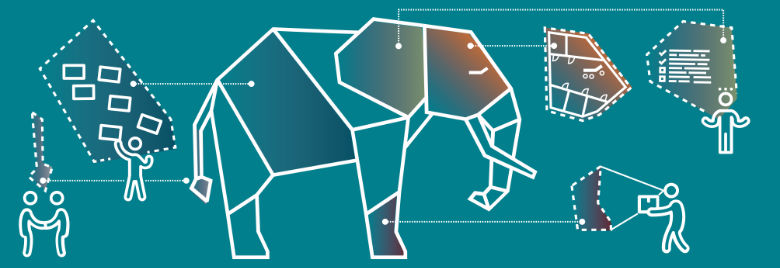
Surprising workplace findings courtesy of mixed methods research
You are undoubtedly familiar with the ancient parable of the blind men and the elephant, in which a group of sightless men who have never before encountered this creature attempt to understand it through touch and explain it to one another. The man who touches the animal’s trunk says it’s something like a snake. The one who feels its flank reckons it has more in common with a wall. The one who touches its ear thinks it must be a sort of fan. And so on. One of the many lessons offered by this tale is that, while one’s experience is true, it does not constitute the entire truth. The implications and applications of this knowledge are, of course, vast and valuable. They’re also full of surprises. This month’s “On our minds” section illustrates a few curiosities we’ve encountered in our work, and how we’ve sought the whole truth to unravel them.
On our minds
The parable about the blind men and the elephant concludes (in most versions) with the men coming to the understanding that they have each examined only a part of the elephant, and that it will be necessary to combine all their experiences to form a complete understanding of the animal’s many characteristics.
Something of a modern analogue to this agreement can be found in the research approach known as mixed methods, which "focuses on collecting, analyzing, and mixing both quantitative and qualitative data in a single study or series of studies. Its central premise is that the use of quantitative and qualitative approaches in combination provides a better understanding of research problems than either approach alone." (1) You may have heard the term “mixed methods” used interchangeably with its close cousin, triangulation. “Borrowed from navigational and land surveying techniques that determine a single point in space with the convergence of measurements taken from two other distinct points,” (2) triangulation “is used to combine the advantages of both the qualitative and the quantitative approach. [It] is not aimed merely at validation but at deepening and widening one's understanding, and tends to support interdisciplinary research rather than a strongly bounded discipline of sociology or anthropology.” (3)
When we at PLASTARC set out to identify and solve workplace problems, our team employs mixed methods research right and left (and up and down). Why does this approach work particularly well to help us get the problem right so we can get the solution right?
The elephant (parable) in the room. Let’s say we want to know where employees spend their time at work. We could... a) ask them, b) station our staff members around the office to observe their movements, c) mine building data like elevator trips and motion sensor records to see where they go. All of these research methods would give us truthful results, but they wouldn’t all report the same thing. Therefore, we need to combine them in order to get the most comprehensive answer to our question.
The truth behind the truth. You might have read the above blurb and thought, "But employees might not give accurate accounts of where they spend their time at work—knowingly or not. So how can we take their answers as the truth?" What we’ve learned is that people’s perspectives and opinions are still illuminating, even if they’re not objectively correct. Someone might say they spend 80 percent of their day working at their desk, but observation and data show the number’s really closer to 50. Interestingly, that gap between perceived and actual behavior is just as important a factor in predicting the future of that work environment as any other. It gives us an indication of how change is likely to be met, and insight into what the company values. So it’s still a valid and useful truth, though perhaps not in the way we anticipated.
Big data, meet little data. Big data is the ‘what’ and little data is the ‘why.’ Big data can count badge swipes to tell us that only 30 percent of a company’s employees walked into their office building last Tuesday. That’s good to know, but it’s just a number until we understand why. Little data is the more nuanced research capable of revealing that, for example, half of the people who didn’t show up that day were telecommuting, and a few more traveled to a client’s office for a meeting—because the videoconferencing mics on the 8th floor never work right.
Here are two common workplace mysteries we’ve solved using mixed methods research:
"What’s up with these new desks?" A case of misunderstood causality. We often hear from clients who have recently bought a few sit-to-stand desks that their employees don’t seem to be taking advantage of the new functionality. The client tends to attribute this to the employees not liking the new desks, which is an understandable assumption—but not usually a correct one. We know this because in offices that have transitioned completely to sit-to-stand desks, a higher percentage of people do take advantage of the new range of functions. This shows us two things:
a) When we make an observation without considering its context, we’re likely to generate an incorrect hypothesis, and
b) Social norms are a great but invisible barrier to change. If employees see that using a sit-to-stand desk is still an exceptional behavior in their workplace, rather than a mainstream one, they will usually shy away from adopting it. (This is the same reason Freakonomics discovered for the confounding popularity of belts over suspenders!)
"Are we wasting our space?" The over/under problem. Large meeting rooms are frequently over-utilized but under-populated. That is to say: they’re very often occupied, but not by very many people. This is because most meetings are only composed of two to three people, but most meeting rooms are sized for eight to ten people. When we look at this problem from a seat count perspective, it’s a conundrum: how can we right-size these rooms when their needs vary so widely? But when we look at it from a use perspective, we are apt to notice that much of the time, people are heading to these rooms primarily for the technology in them: the best tech in an office is likely in its biggest room. Once we know this truth, we can solve for meeting rooms’ over-utilization/under-population problem by doing things like outfitting individual desks and smaller communal work areas with the most popular tech capabilities. (It’s a lot like Moneyball: searching tangential avenues for opportunities to improve will give you an edge over the status quo.)
See why we love a mixed methods approach? It helps gain traction on the right problems, so we’re not spinning our wheels or heading in the wrong direction. We don’t want our clients to miss out on the significant benefits of sit-to-stand functionality for all, to waste their space and annoy their employees with ill-equipped or wrong-sized meeting areas, or to succumb to any other preventable pitfalls. There is a better way!
We see some version of the two problems above on nearly every project we take on. The fact that they persist points to the need for more thoughtful, diverse inquiry in the pursuit of solving our most confounding workplace puzzles. That’s what we do best.
(1) Creswell, John W. and Plano Clark, Vicki L. Designing and Conducting Mixed Methods Research. SAGE Publications, 2010.
(2) Rothbauer, Paulette. "Triangulation." In Given, Lisa (Ed.), The SAGE Encyclopedia of Qualitative Research Methods. SAGE Publications. pp. 892-894.
(3) Yeasmin, Sabina and Ferdousour Rahman, Khan. 'Triangulation' Research Method as the Tool of Social Science Research. BUP JOURNAL, Volume 1, Issue 1, September 2012.
From the archives
In Case You Missed It
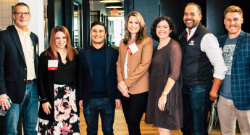
WD TALKS Atlanta: The Changing Nature of Work and the Workplace
We spoke at this October 17 event hosted by our friends at Work Design Magazine, with partners WeWork and Swingspace, that explored how the landscape of workplace is changing.
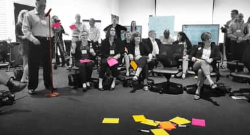
IFMA World Workplace 2017
On October 19, we spoke at the International Facilities Management Association's annual gathering about how multisensory workplaces provide an unparalleled opportunity to express workplace "EQ"—and were interviewed by ISS about what makes an ideal workplace
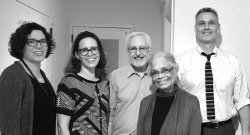
Social Science and Architecture History Primer
We helped to organize this November 1 discussion at AIA New York about how social science has (and hasn’t) changed the practice of architecture in the past 50 years.

CoreNet Global Summit 2017
With our clients from Verizon, Mozilla, and Unity Technologies, we presented “Corporate Real Estate Strategies: From Coworking to Crowdsourcing” at this premiere gathering of corporate real estate leaders in Seattle, November 5 through 7.
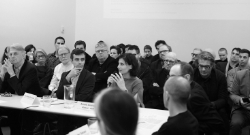
Economic Diversity and Social Resilience in Architecture Education
We were pleased to join deans from many top schools of architecture on November 4 in NYC to discuss how education and leadership in our field can and should respond to some of the most salient topics of our time.

Workplace Wisdom from the Frontiers of Science
This Nobel Prize season, we present three neuroscience concepts that can teach us how to improve the spaces we spend the most time in, including the workplace.
Looking Ahead
At PLASTARC, we dedicate a fair amount of time and energy to planning, presenting at, and attending events where "work" and “place” intersect. Why? Because we want to stay sharp, keep in touch, and spread the good word about how human-centric design can improve lives. We’re looking forward to these events next month:



